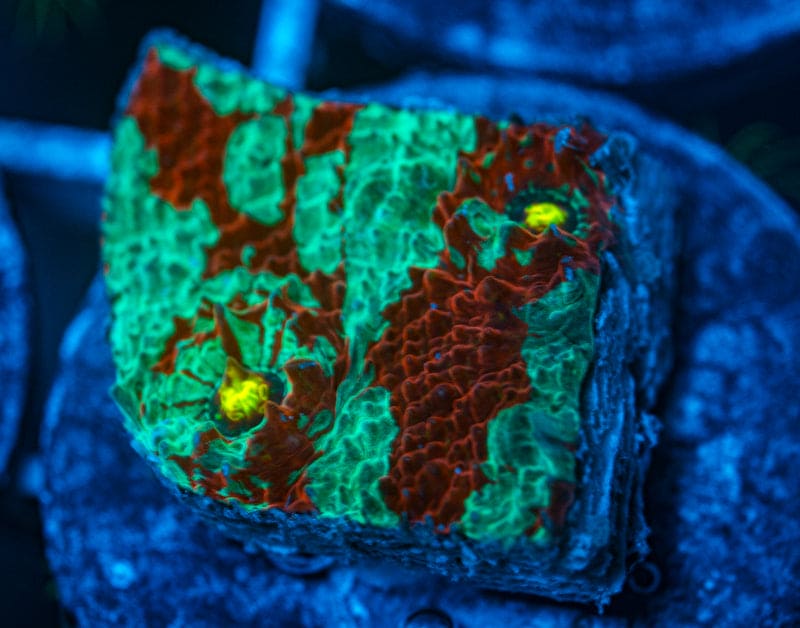Koralkingdom.com
Destroyer Chalice coral WYSIWYG
Destroyer Chalice coral WYSIWYG
Save an additional 10% with a subscription below
Couldn't load pickup availability
Share
Chalice corals, with their captivating colors, intricate patterns, and unique growth forms, have become sought-after additions to reef aquariums. These stunning corals belong to the genus Echinophyllia and are known for their remarkable beauty and relative ease of care. In this blog, we'll delve into the enchanting world of chalice corals and explore the best practices for keeping them thriving in your aquarium.
Understanding Chalice Corals: Chalice corals are members of the family Faviidae and are characterized by their thick, fleshy tissue and distinct skeletal structure. They come in a wide range of colors, including vibrant shades of red, green, blue, purple, and even multi-colored varieties. Chalice corals exhibit different growth forms, including encrusting, plating, and branching varieties, adding diversity and visual interest to reef aquariums.
Care Requirements: Creating an optimal environment for chalice corals involves paying attention to several key factors:
-
Water Parameters: Chalice corals thrive in stable water conditions. Maintain temperature between 75-80°F (24-27°C), salinity at 1.024-1.026, pH between 8.1-8.4, and alkalinity (dKH) between 8-10. Regular water testing and adjustments are crucial for ensuring water quality.
-
Lighting: Moderate to low lighting is ideal for most chalice corals, as excessive light can cause bleaching or tissue damage. LED lighting with adjustable intensity and spectrum control allows you to tailor the lighting to suit the needs of your corals.
-
Water Flow: Chalice corals prefer gentle to moderate water flow. Position them in areas of the aquarium where water movement is sufficient to prevent debris buildup but not strong enough to cause tissue damage.
-
Feeding: While chalice corals obtain most of their nutrition through photosynthesis, they can benefit from occasional feeding. Offer small, meaty foods such as mysis shrimp, brine shrimp, or specialized coral foods to supplement their diet.
Placement: When placing chalice corals in your aquarium, consider their growth form and lighting preferences:
- Encrusting varieties can be placed directly on the substrate or glued onto a frag plug or rock surface.
- Plating chalice corals should be positioned on a flat surface where they have room to spread out and grow.
- Branching chalice corals can be placed on elevated rock structures to allow for vertical growth.
Avoid placing chalice corals too close to aggressive or stinging corals, as they may engage in territorial disputes.
Propagation: Chalice corals can be propagated through fragging, similar to other coral species. Using a sharp tool, carefully cut a portion of the coral colony and attach it to a Chalice corals are prized for their stunning appearance and relatively straightforward care requirements, making them popular choices for reef aquarium enthusiasts. By providing stable water conditions, appropriate lighting, and careful placement, you can enjoy the beauty of chalice corals in your own aquatic environment. With proper care and attention, these captivating corals will thrive and become focal points of admiration in your reef aquariumscape.


